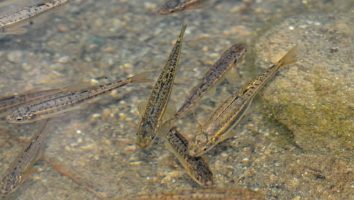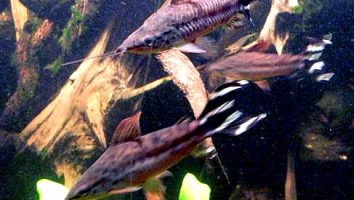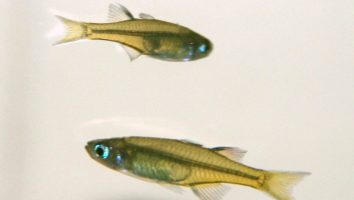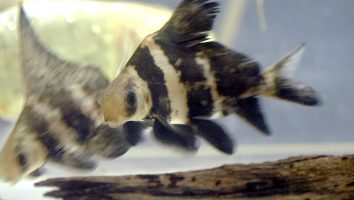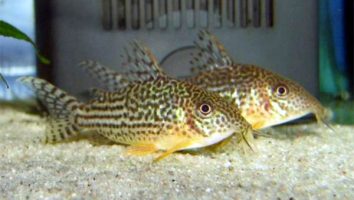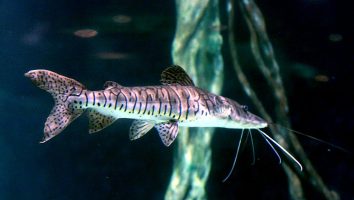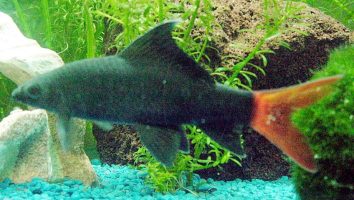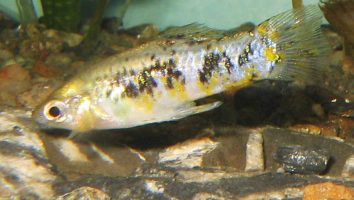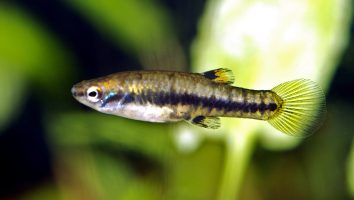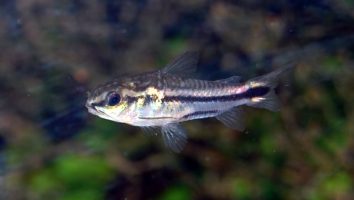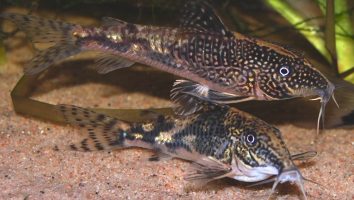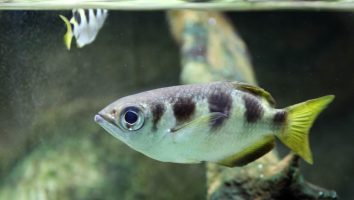The Black Tetra is a freshwater fish that is popular among fishkeepers for its beautiful jet-black coloration.
Despite their small size, they are relatively easy to care for and make a great addition to any freshwater aquarium.
If you’re thinking about getting a Black Tetra (or any other freshwater fish), this guide will teach you everything you need to know about their care.
You’ll learn about their diet, tank mates, lifespan, and more!
Table of contents
Species overview
Black tetras (scientific name: Gymnocorymbus ternetzi) are a freshwater fish that’s native to South America. They’re most commonly found in the Paraná River basin, which covers a large area including parts of Brazil, Paraguay, and Argentina.
They prefer slow-moving waters with a lot of vegetation, making them well-suited for life in aquariums. In the wild, their diet consists mostly of insects and other small invertebrates.
Black tetras are a popular choice for freshwater aquariums because of their sleek, black bodies and relatively peaceful nature. They’re compatible with a wide variety of tank mates and make a great addition to any community tank.
Appearance
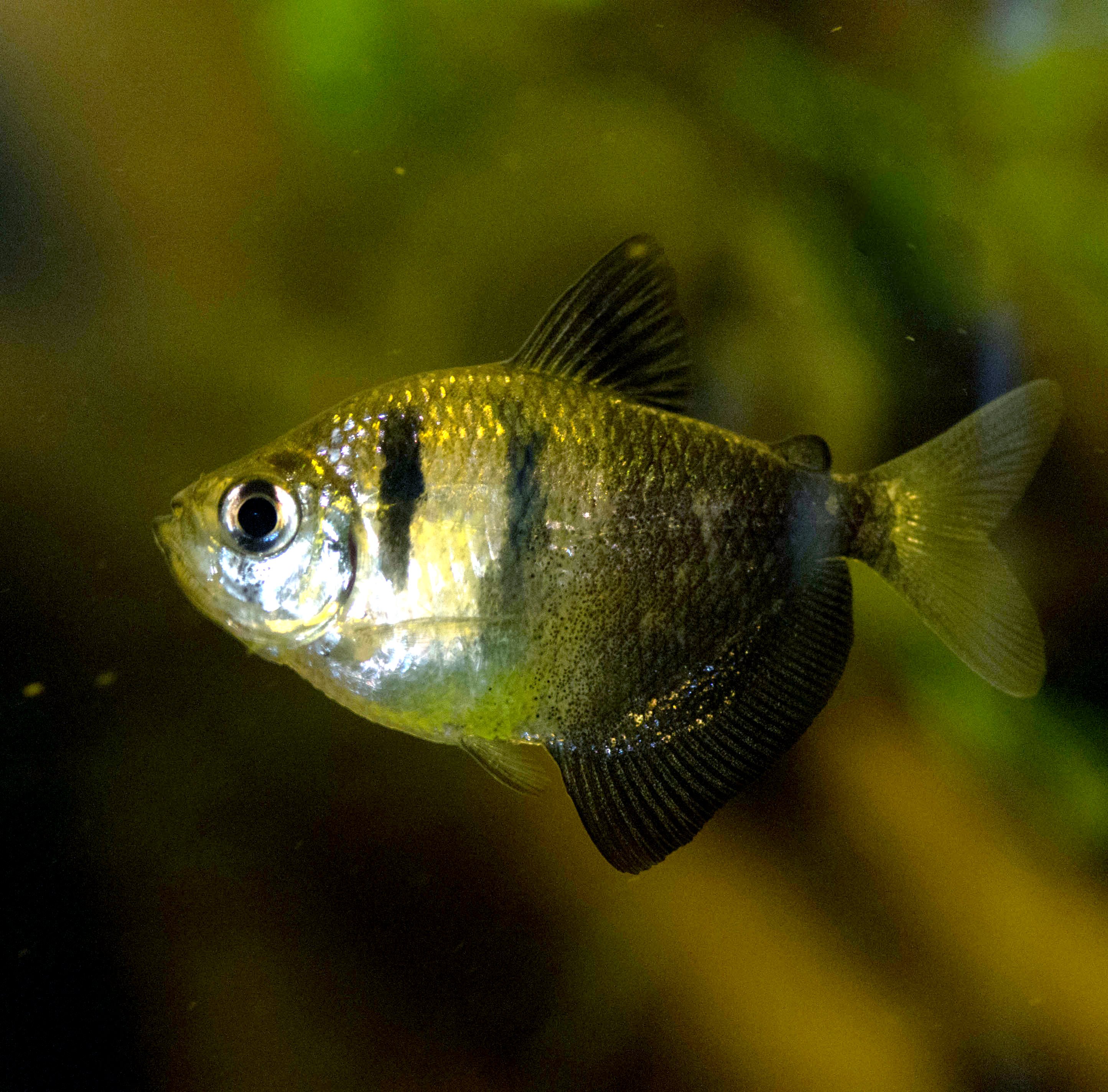
The Black Tetra is a freshwater fish that is easily recognizable thanks to its unique coloration. As you can probably guess from their name, these fish are black from head to tail.
The only thing that interrupts this color is a thin silver line that runs along their body from the gill plate to the base of their tail fin.
This line is actually what helps scientists to differentiate between males and females. In males, this line is a bit thinner and more well-defined. In females, the line is a bit thicker and not as well-defined.
Other than that, the only thing that really stands out on these fish is their eyes. They have large eyes that are a bit bulbous and really stand out against their dark coloration.
The Black Tetra has a standard tetra body shape. This means that they’re long and thin with a slightly laterally compressed body.
They have a small dorsal fin that’s located about halfway back on their body. Their anal fin is a bit longer and located closer to the rear of the fish.
They have a forked caudal fin that’s relatively large in comparison to the rest of their body.
Lifespan
Black tetras have a lifespan of 5 to 8 years. However, their lifespan can be shortened by a number of different factors.
One of the biggest things that will impact their lifespan is the quality of the water they’re living in. If the water is too warm or too cold, has the wrong pH, or contains too much ammonia, their lifespan will be significantly reduced.
Another factor that can impact their lifespan is their diet. If they’re not getting enough food, or if the food they’re getting is of poor quality, their lifespan will be shorter.
Size
The average black tetra size is between 2 and 3 inches long. However, they can grow up to 4 inches in length under the right conditions. Most of the time, though, they will max out at 3 inches.
Tank
Tank Size
The recommended tank size for black tetras is at least 20 gallons. This is assuming you’re keeping them in a school of 5 or more fish. As with all schooling fish, the more room they have to swim the better.
Black tetras are a peaceful community fish but they can be nippy so it’s best to avoid keeping them with fish that have long fins or slow-moving fish.
Water Parameters
The Black Tetra is a freshwater fish that is native to the Amazon River Basin. As such, they are accustomed to living in warm water with a neutral to slightly acidic pH.
In the wild, Black Tetras live in slow-moving streams and rivers with plenty of plants and hiding places.
To replicate their natural habitat, you should maintain the following water parameters in your aquarium.
- Water temperature: 72 to 82 degrees Fahrenheit
- pH levels: 6.5 to 7.5
- Water hardness: 5 to 15 dGH
- Alkalinity Levels: 4 to 8 dKH
What To Put In Their Tank
The inside of a black tetra’s tank can be set up in a number of different ways. It all depends on your personal preference and what other species you have in the aquarium.
That being said, there are a few key things that we feel are important to include in any set up.
The first is some form of plants. These fish love to hide and will feel much more comfortable if there’s some vegetation for them to do so. We recommend something like hornwort or water wisteria.
Other than that, these fish don’t really need anything else in their tank. A gravel substrate is fine, but feel free to use sand if you prefer.
As for decorations, it’s really up to you. Black tetras are known to nibble on plants, so anything you put in their tank should be able to withstand that.
Common Diseases
The Black Tetra is a fairly hearty fish, but that doesn’t mean they can’t get sick. In fact, there are a few diseases that seem to target this species more than others.
The most common disease that affects Black Tetras is Tetra Disease. This is a virus that can cause a wide range of symptoms, including lethargy, loss of appetite, and (in severe cases) death.
While there is no cure for this disease, it is possible to treat the symptoms and help your fish live a relatively normal life. However, it’s important to catch it early.
The other disease that commonly affects Black Tetras is Neon Tetra Disease. This is a bacterial infection that often leads to death.
The good news is that Neon Tetra Disease is relatively easy to treat. The bad news is that it’s often too late by the time symptoms start showing.
As with most diseases, the best way to prevent your Black Tetra from getting sick is by keeping a close eye on the water quality in their tank. A clean and stable environment is always the best way to keep your fish healthy.
Behavior & Temperament
Black tetras are schooling fish, so they do best when they’re kept in groups of six or more. That being said, they are relatively peaceful fish and get along with most other tank mates.
They are active fish that enjoy swimming around, so they need a tank that is at least 20 gallons. They also prefer an aquarium with plenty of hiding places and vegetation.
Black tetras are omnivores, so they will eat a variety of foods. In the wild, their diet consists of small insects, worms, and crustaceans. In captivity, they can be fed a diet of pellets, flakes, and frozen or live foods.
Black tetras are generally peaceful fish, but they can be nippy. They may nip at the fins of long-finned fish, so it’s best to avoid keeping them with fish that have long fins.
Tank Mates
Black tetras are peaceful community fish that do well in groups. In the wild, they school together in large numbers for safety.
As a result, these fish are used to being around other fish. They’re also not known for being fin nippers or bullies.
When choosing tank mates for black tetras, it’s best to stick with other small, peaceful fish. Larger fish might see them as food, and aggressive fish will make their lives miserable.
Here are some species that make good tank mates for black tetras:
- Neon Tetra
- Cardinal Tetra
- Harlequin Rasbora
- White Cloud Mountain Minnow
- Ghost Shrimp
- Guppies
- Platies
Breeding
The Black Tetra is a beautiful little freshwater fish that is a favorite among aquarium enthusiasts. They are peaceful, easy to care for, and make a great addition to any community tank.
While they are not the easiest fish to breed in captivity, it is possible with a little patience and effort.
The first step is to set up a breeding tank. It should be at least 10 gallons and should have a fine gravel substrate. The water should be soft and slightly acidic with a temperature between 75 and 80 degrees Fahrenheit.
It’s also a good idea to add some plants to the breeding tank. Black tetras like to lay their eggs on plant leaves, so the more plants you have the better. Just make sure that the plants are well- anchored so they don’t get uprooted when the fish start breeding.
When everything is set up, it’s time to add the fish. You’ll want to add two males for every female. Black tetras are not picky when it comes to mates, so you can just add a mix of males and females to the tank.
The breeding process will start when the females lay their eggs on the plants. The males will then fertilize the eggs.
Once the eggs are fertilized, the parents will eat them. This is normal behavior and you shouldn’t try to stop it.
If you want to raise the fry, you’ll need to remove the parents from the tank after the eggs are laid. The eggs will hatch in about 24 hours.
Once the fry have hatched, you can start feeding them baby brine shrimp or other commercially available fry foods.
Conclusion
Black tetras are an incredibly versatile fish that can do well in a wide range of tanks.
Their striking black coloration is perfect for adding a bit of contrast to your tank, and their small size means they won’t take up too much space.
They’re also relatively easy to care for, which makes them a great choice for beginner aquarists.
If you’re looking for a fish that’s both beautiful and low-maintenance, the black tetra is a great choice!

